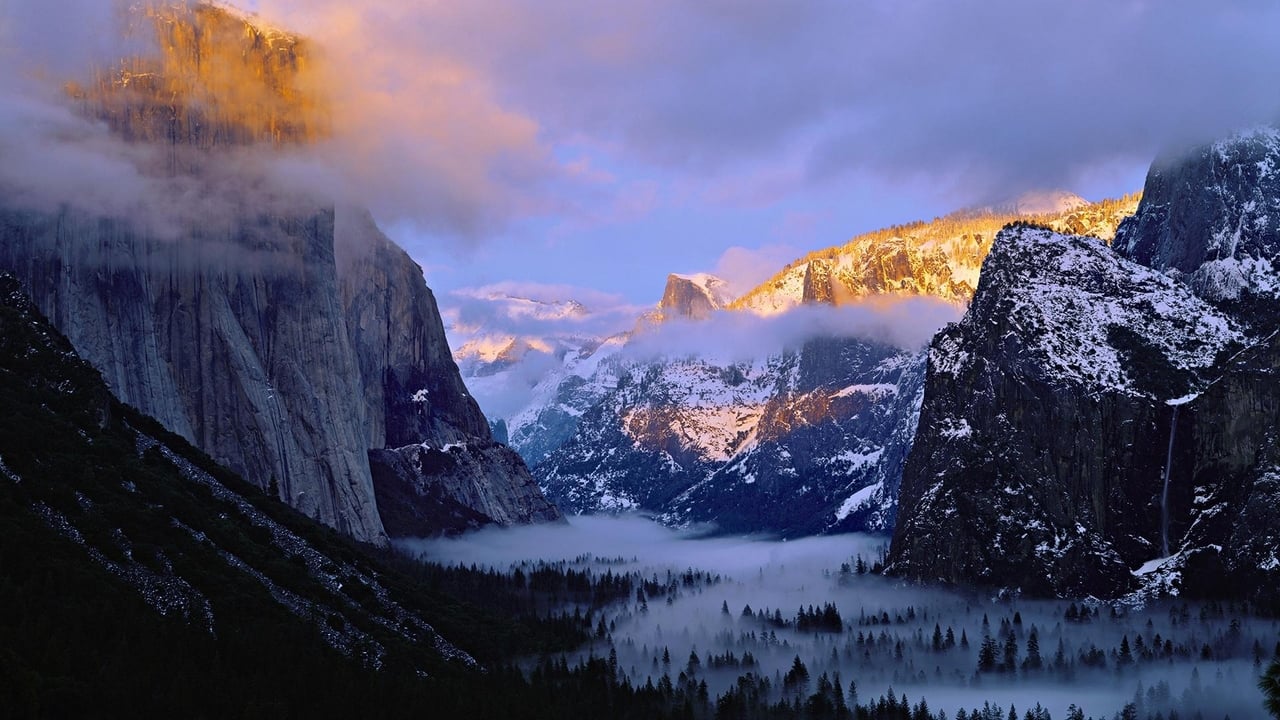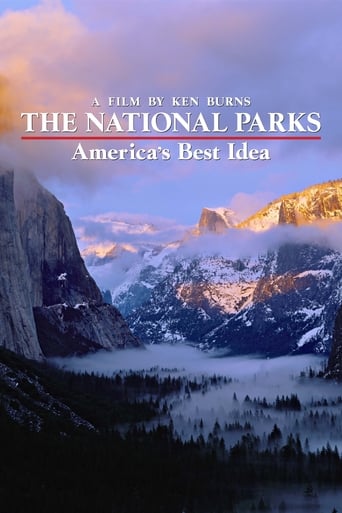

It is another example of what Ken Burns does so well. It is a film that brings a well known but little understood aspect of American history to life. The broad scope of the film is monumental. It covers, in fair detail, the creation of all the major National Parks while delving into the people, the politics, the conflicts, and the personal stories behind the scenes. As with other of Ken's work, you begin to feel that the people in the story are family friends or people you have known for years. You understand how personalities shape events and move American custom and law. You are left with an appreciation of American democracy and freedom and the unruly way Americans sometimes resolve internal conflict how popularity and simply "the right thing" can win the day after a good fight.The film is interspersed with glimpses of typical Americans and reveals their most delicate feelings in experiencing the National Parks. It is very effective at illustrating the transformative power of natural beauty, its healing and empowering effects on the soul, and our deep connections to nature and wildlife and our deep needs for it. The film is as much about the why humans seek to preserve natural beauty as it is a history of it.It all works. It is a masterful piece of art and you will enjoy and be moved by it.
... View MoreI just finished watching Ken Burn's The National Parks: America's Best Idea, and it's fabulous -- it far far far exceeded any expectations I may have had. The series is fascinating, surprising, intriguing, unexpected, and well narrated and voiced and commentated. The visuals are a combination of historical works (photos, footage, articles, etc.), lovely paintings and photos, and of course glorious beautiful high-definition cinematography. The narration (which is so interesting you don't even need to watch the images -- as I learned when I had to eat dinner during part of it -- but who can resist!) is done by Peter Coyote, and the voices of the historical letter-writers, authors, journalists, and so forth is by various luminaries from Eli Wallach, Derek Jacobi, John Lithgow, Adam Arkin, Tom Hanks, and dozens of others. And there are the occasional live comments from historians and other experts from various walks of life. It's exquisitely put together and organized, never leaving the viewer bored; stories flow into and out of one another, or end only to be unexpectedly picked up again in a later hour or episode. The story of the parks is told not only through the stories of the politicians and naturalists involved, but also through the lives of everyday people and of artists and photographers (such as Ansel Adams) who loved the wilderness locales. There is a perfect mix of history, nature, beauty, drama, suspense, victories, defeats, and human interest. I was in tears at a few points. Although a small handful of the names important to the natural park system are familiar (John Muir, Teddy Roosevelt, FDR, etc.), the stories involving even those few are quite unexpected and fascinating. The vast majority of the true movers and shakers in the development of the natural parks are, however, gloriously unsung -- and thus doubly interesting because their outsized stories, which affected the country so greatly, are not nationally famous.If you wish to purchase the DVD set, it's cheapest on Amazon, and the shipping is free.If you watch the series on TV reruns if it ever returns, make sure you do it in order. It starts in 1851: 1851-1890: The Scripture of Nature 1890-1915: The Last Refuge 1915-1919: The Empire of Grandeur 1920-1933: Going Home 1933-1945: Great Nature 1946-1980: The Morning of Creation
... View MoreI absolutely love it! Extraordinary human stories behind the extraordinary beauty. Couldn't help watching it twice every night this week, thanks to WCMU, who broadcast each episode twice. Think I might catch it the third time in this weekend's marathon rerun!What more can I add? I would love to hear Garrison Keillor's voice as he would be the best narrator for our national treasures (of which he is one himself).Indeed, our National Parks are a place of love, as one commentator said so movingly in the film.The history of our National Parks has enriched my appreciation of great nature with humanity... Enough talking, let's go to our National Parks now.
... View MoreThe good: The historical information about the early years, about John Muir, Mather, Rockefeller and the railroads. Coverage of the tension between nature-use or "sanctuary vs. tourist resort". The fights to save various areas and their incorporation into the parks, to prevent spoilage of the parks, and the move to save predators, such as the reintroduction of wolves. The beautiful nature photography, and the historical photos.The bad: Too many talking heads, such as creepy William Cronon. Peter Coyote has been overused as a narrator, and his voice here is too pretentious and sanctimonious. Too many tedious descriptions of traveler impressions of parks. Too many statements about values of wildness which say or imply they can only be found in national parks.The ugly: The violins and weepy sentimentality. Break out the Kleenex! The phony religious and patriotic sentiment, such as the early parts about how the parks are primarily a place to worship a god. Later this becomes a claim it's the patriotic way to be part of America. Too much use of the Lincoln Memorial. Later for example, we get "We tend to put our highest ideals, our highest dreams in our national parks, therefore they function like consciences" - they improve your relation with your fellow man. Gimme a break! I love the National Parks. I really like several of Burn's productions, but was bored by "The War". This is almost that bad.Here is an example of a great presentation on the same subject, in a specific place: http://www.bigcypressswamp.org/bcs/home.html Elam Stoltzfus knows how to do it right.
... View More